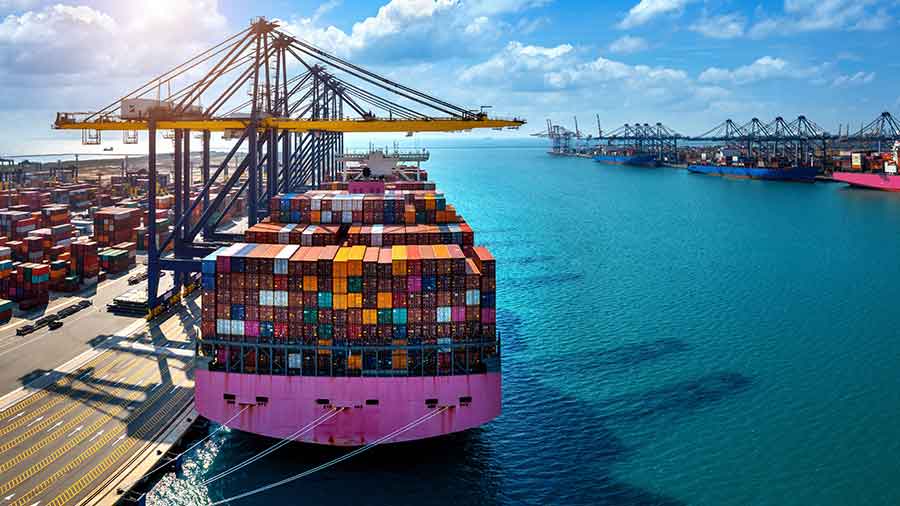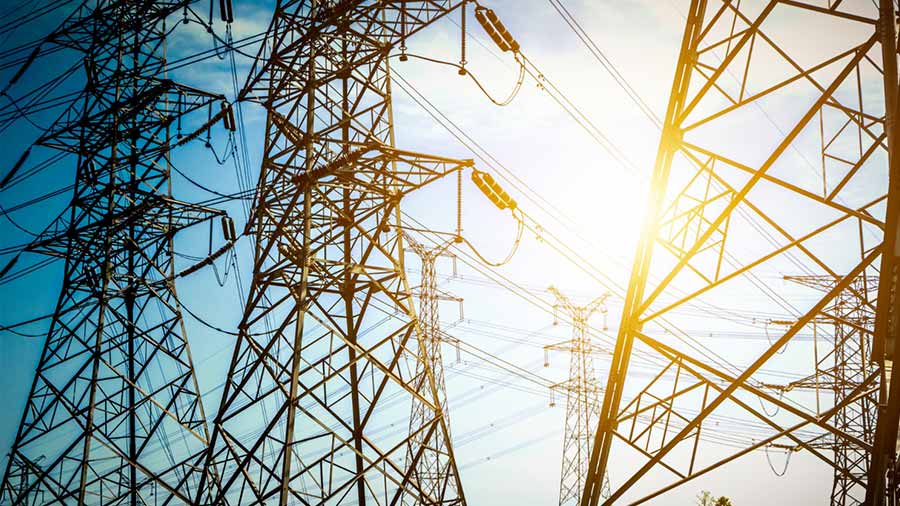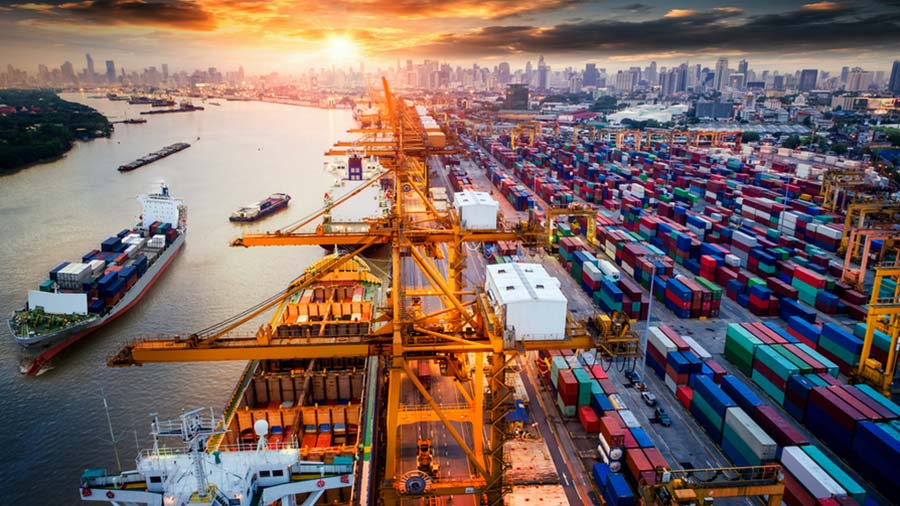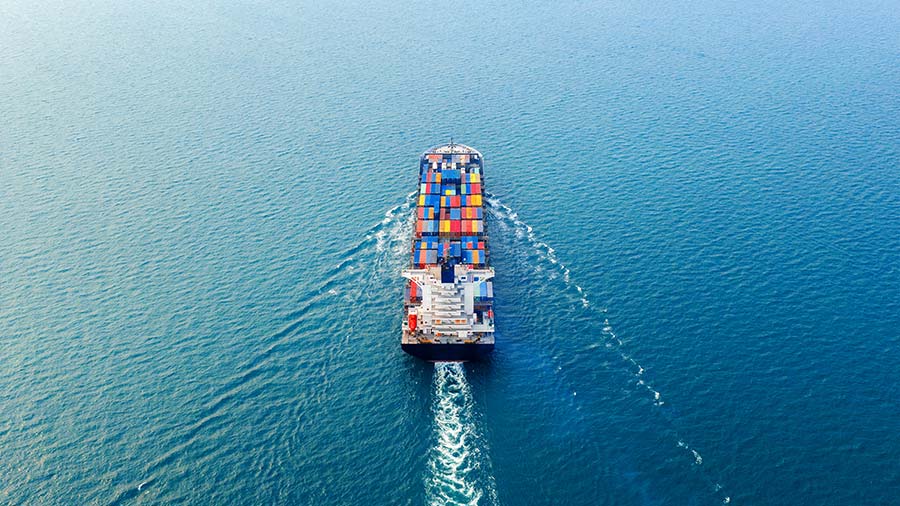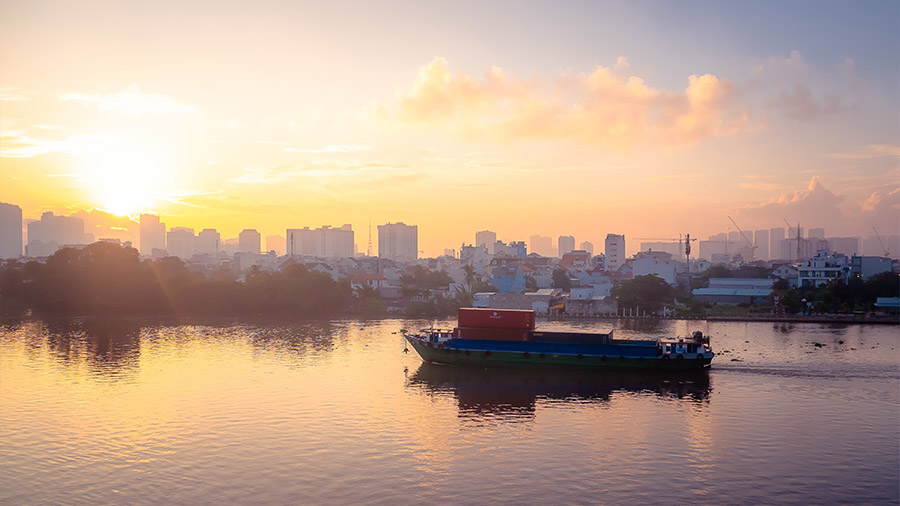Vietnam’s strategic location in Southeast Asia has made it an attractive destination for foreign investment and trade. With a young and dynamic workforce, Vietnam's economy has diversified into manufacturing, agriculture, and services, further bolstering its economic standing.
However, to sustain and accelerate this growth, the development of robust transport infrastructure is crucial. Efficient transport systems are the backbone of economic development, facilitating the smooth movement of goods and people, reducing logistics costs, and enhancing connectivity both domestically and internationally. Without adequate infrastructure, economic activities can be severely hampered, leading to bottlenecks in trade and inefficiencies that could stifle growth.
This article will shed light on the pivotal role that transport infrastructure plays in Vietnam's economic development.
Historical background
Vietnam's transport infrastructure has undergone significant transformation since the colonial era. During the French colonial period, the initial development of railways and roads began, primarily to serve colonial interests and facilitate resource extraction. These early systems, while rudimentary, laid the groundwork for future expansions and modernizations.
Post-independence, Vietnam faced the monumental task of rebuilding and expanding its transport infrastructure. Since the late 1980s, Vietnam's transport sector has grown at unprecedented rates. The early 2000s saw a doubling in the volume of passenger transport and a 70 percent increase in freight traffic. Each main form of transport—road, railway, aviation, inland waterways, and maritime—has seen steady growth in volume, reflecting the country's rapid development.
Vietnam has a long history of utilizing its extensive network of rivers and canals for transportation. Today, inland waterways transport about 17 percent of all domestic goods tonnage and account for nearly 19 percent of all traffic tasks, a measure combining both tonnes loaded and distance carried. These figures are impressive by international standards, surpassing those of countries like China, the United States, and the European Union.
Recognizing the potential of inland waterways, Vietnam has continued to prioritize their development. Between 2010 and 2016, there was a 47 percent increase in traffic volume on these waterways. However, relying solely on natural conditions for inland waterways could limit Vietnam's competitive advantage over time.
One of the most notable milestones in recent history was the implementation of the World Bank-financed Third Rural Transport Project between 2008 and 2015. This project rehabilitated 3,100 kilometers of rural roads and maintained over 19,000 kilometers of rural roads across 33 provinces in Northern and Central Vietnam. Such initiatives have been instrumental in enhancing connectivity, especially in rural areas, thereby supporting local economies and improving access to essential services.
Current state of transport infrastructure
Vietnam's transport infrastructure comprises an extensive network of roads, railways, ports, and airports. This network plays a crucial role in supporting the country's rapid economic growth, facilitating the movement of goods and people both domestically and internationally.
Recent developments and upgrades in each sector
Roads
Up to 2022, the total road length across the country is 595,201 km, of which 25,560 km comprises national roads (including national highways and expressways), making road transport the dominant mode for both passenger and freight traffic. Recent years have seen significant investments in expanding and modernizing the road infrastructure. The expansion of expressways and national highways have been a priority under the government's transport infrastructure master plan. Between 2021 and 2030, thousands of kilometers of new expressways are planned to be built, enhancing connectivity, and reducing travel times. Key projects include the construction of new routes and the upgrading of existing ones to improve capacity and safety.
Railways
Vietnam's railway network, although less extensive than its road network, is undergoing modernization efforts. Vietnam’s national railway network stretches over 3,143 kilometers and encompasses 277 stations, including 2,703 kilometers of mainline tracks and 612 kilometers of branch lines. The government has initiated projects to upgrade tracks and introduce new metro systems in major cities. High-speed railways between Hanoi and Vinh, and Ho Chi Minh City and Nha Trang, are in development, aiming to improve the speed and efficiency of rail transport. These projects are expected to significantly enhance the country's rail infrastructure, providing a reliable alternative to road transport.
Ports
Vietnam's ports are vital to its trade and economic activities, with significant upgrades and expansions underway. Major ports like Hai Phong and Ho Chi Minh City have seen enhancements to accommodate larger vessels and increase cargo handling capacities. The Lach Huyen Port in Hai Phong, a public-private partnership project with Japan, is one of the key developments. This deep-water port can now handle container ships of up to 8,000 TEU, boosting Vietnam's maritime capabilities. These upgrades are crucial for supporting the country's growing trade volumes and maintaining its competitive edge in global markets.
Airports
Air travel in Vietnam has also experienced significant growth, with major airports undergoing upgrades and expansions. Tan Son Nhat International Airport in Ho Chi Minh City and Noi Bai International Airport in Hanoi have seen improvements to handle increasing passenger and cargo traffic. Additionally, the construction of Long Thanh International Airport in Dong Nai province is a major milestone. Once completed, it will be the largest airport in Vietnam, capable of serving 100 million passengers annually. This new airport is expected to alleviate congestion at Tan Son Nhat and enhance the country's aviation infrastructure.
Vietnam's transport infrastructure capabilities and usage reflect its rapid development. The country's road transport dominates with 91.9 percent of passenger traffic and 79.84 percent of freight volume. The railway network, although smaller, plays a crucial role in long-distance transport. Ports handle a significant portion of Vietnam's trade, with major ports like Hai Phong and Ho Chi Minh City Port leading in cargo volume. Airports have seen substantial growth, with major upgrades ensuring they can meet future demands.
Government policies and initiatives
The Vietnamese government has outlined an ambitious transport infrastructure master plan spanning from 2021 to 2030. This comprehensive plan, estimated to cost between VND 1.1 quadrillion (US$43 billion) and VND 1.6 quadrillion (US$65 billion), aims to build thousands of kilometers of new expressways, high-speed rail routes, deepwater ports, and new international airports. The goal is to significantly enhance the country's cargo transportation capacity to 4.4 billion tons per year and improve road transport to handle 2.76 tons of cargo and 9.43 million passengers annually. These initiatives are pivotal to supporting Vietnam's economic growth and maintaining its competitive edge in global markets.
Key government agencies involved
Several key government agencies are responsible for planning and implementing transport infrastructure projects in Vietnam:
- Ministry of Transport (MoT): The central authority overseeing transport infrastructure development and policy formulation.
- Vietnam Inland Waterways Administration (VIWA): A specialized agency under MoT, responsible for managing and regulating the inland waterways sector.
- Vietnam Maritime Administration (VINAMARINE): Manages the development and regulation of maritime ports and shipping routes.
- Vietnam Railway Authority (VRA): Focuses on railway infrastructure and services.
These agencies collaborate to ensure the effective implementation of infrastructure projects and adherence to regulatory standards.
Major funding sources and budget allocations
The Vietnamese government has identified multiple funding sources to finance its ambitious transport infrastructure projects. These include:
- State Budget: A significant portion of the funding comes from the national budget, allocated annually to support infrastructure development and maintenance.
- Official Development Assistance (ODA): International financial institutions, such as the World Bank, provide loans and credits to fund large-scale infrastructure projects. For example, the World Bank recently approved a US$107 million credit to enhance the capacity, efficiency, and safety of inland waterways in southern Vietnam.
- Public-Private Partnerships (PPPs): The new PPP law, enacted in January 2021, provides a framework for private sector participation in transport infrastructure projects. This law offers various incentives, such as tax reductions, credit support, and reduced land lease fees, to attract private investors.
Role of Public-Private Partnerships (PPPs) and foreign investments
The PPP model encourages collaboration between the government and private investors, leveraging private sector expertise and funding to complete complex projects. Key features of the new PPP law include:
- Revenue-Sharing Scheme: If project revenues exceed 125 percent of the forecasted amount, the state receives 50 percent of the excess. Conversely, if revenues fall below 75 percent of the forecasted amount, the state shares 50 percent of the shortfall.
- Foreign Currency Guarantees: The government guarantees the availability of foreign currency for project-related activities, ensuring investors can transfer profits and conduct capital transactions smoothly.
- Incentives for Domestic Use: Projects that commit to using domestic content, contractors, materials, and goods receive preferential treatment during the tender process.
Foreign investments have been instrumental in developing key infrastructure projects, such as the Lach Huyen Port in Hai Phong, a public-private partnership with Japan, and the Long Thanh International Airport in Dong Nai province, set to become Vietnam's largest airport.
Major projects and investments
North-South Expressway
The North-South Expressway is a critical infrastructure project in Vietnam, aiming to enhance connectivity between the northern and southern regions. This project is vital for reducing travel times, boosting economic integration, and supporting the country’s overall economic growth. The expressway, spanning over 2,000 kilometers, will connect major cities and economic hubs, facilitating smoother and more efficient transport of goods and passengers. Noteworthy progress has been made, with several sections already completed and others under construction, reflecting the government’s commitment to modernizing the country's road infrastructure.
Metro Systems in Hanoi and Ho Chi Minh City
The development of metro systems in Hanoi and Ho Chi Minh City marks a significant step towards improving urban mobility and reducing traffic congestion. These projects aim to provide a modern, efficient, and sustainable mode of transport for the growing urban populations. In Hanoi, the first metro line, Cat Linh-Ha Dong, has been operational since 2021, while additional lines are in various stages of planning and construction. Ho Chi Minh City’s metro system is also progressing, with Line 1 expected to be completed soon. Despite facing challenges such as funding delays and technical issues, both cities are making substantial advancements, promising a transformative impact on urban transport.
Inland Waterways
Vietnam’s extensive network of rivers and canals has long been a cornerstone of its transport infrastructure. The government has prioritized sustainable development initiatives to enhance the capacity and efficiency of inland waterways. Projects such as the Southern Waterway Corridors and Logistics Development Project, funded by the World Bank, aim to increase cargo volumes, reduce travel times, and cut greenhouse gas emissions. These initiatives involve upgrading key corridors, improving navigational safety, and connecting manufacturing centers to major ports, thereby boosting the competitiveness of Vietnam’s trade logistics.
Case studies of successful projects funded by International Organizations
World Bank’s Third Rural Transport Project
The World Bank-financed Third Rural Transport Project is a prime example of successful international collaboration. Between 2008 and 2015, this project rehabilitated 3,100 kilometers of rural roads and maintained over 19,000 kilometers across 33 provinces in Northern and Central Vietnam. The improvements significantly enhanced connectivity in rural areas, supporting local economies and improving access to essential services. Despite the project’s overall success, it highlighted the need for complementary programs to ensure that vulnerable groups, particularly female-headed households, could fully benefit from the improved infrastructure.
Asian Development Bank’s Support for Women in Dong Thap Province
Another notable case is the Asian Development Bank's initiative in Dong Thap Province, which combined road construction with programs to prepare local women for new income opportunities. The project provided business development training and job placement assistance, resulting in substantial income increases for participating women. This integrated approach demonstrated the effectiveness of coupling transport investments with complementary development programs to achieve broader economic and social benefits.
Impacts
The major infrastructure projects in Vietnam are poised to have a profound impact on both the local and national economy. Improved transport infrastructure facilitates more efficient movement of goods and people, reducing logistics costs and enhancing productivity. The North-South Expressway and metro systems in Hanoi and Ho Chi Minh City will significantly ease traffic congestion, promote regional integration, and support urban development.
The development of inland waterways, supported by projects like the Southern Waterway Corridors and Logistics Development Project, will enhance Vietnam’s trade competitiveness by providing a greener, more efficient alternative to road transport. These projects are expected to reduce greenhouse gas emissions and lower logistics costs, aligning with the country’s sustainability goals.
Moreover, international collaborations such as the World Bank and Asian Development Bank projects highlight the importance of integrated development strategies. By addressing infrastructure needs alongside social and economic challenges, these initiatives ensure a more equitable distribution of benefits, fostering inclusive growth and sustainable development.
Future prospects and opportunities
Vietnam is poised to embark on numerous ambitious transport infrastructure projects across various sectors. The government’s master plan for 2021-2030 outlines extensive expansions, including the construction of thousands of kilometers of new expressways, high-speed rail routes, deepwater ports, and new international airports. Key projects include the North-South Expressway, additional metro lines in Hanoi and Ho Chi Minh City, and the Long Thanh International Airport, which is set to become the largest airport in Vietnam.
Vietnam is also focusing on integrating its transport infrastructure with regional and global networks. By enhancing connectivity with neighboring countries and international trade routes, Vietnam aims to strengthen its position as a key logistics hub in Southeast Asia. This involves upgrading ports to accommodate larger vessels, expanding rail links with China and other ASEAN countries, and participating in initiatives like the Belt and Road Initiative (BRI).
Vietnam's transport infrastructure sector presents numerous opportunities for investors and businesses. The expressway and highway projects are particularly attractive, given the growing demand for efficient road transport. Additionally, the expansion of urban metro systems in major cities offers significant investment prospects. The development of high-speed rail networks and modernization of airports and ports are also sectors ripe for investment.




